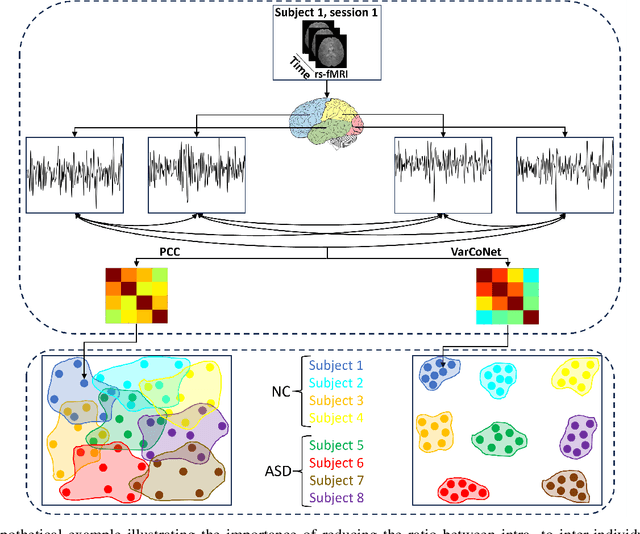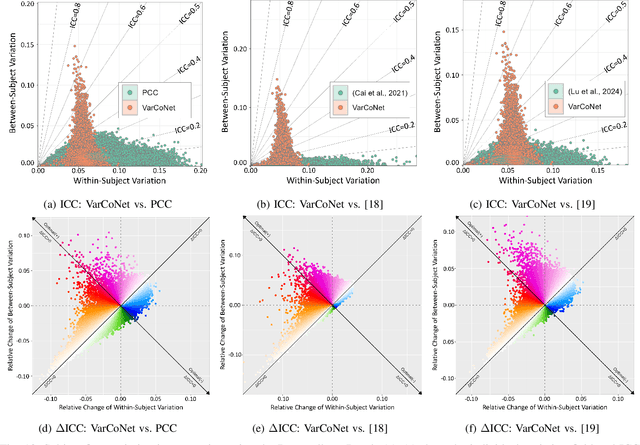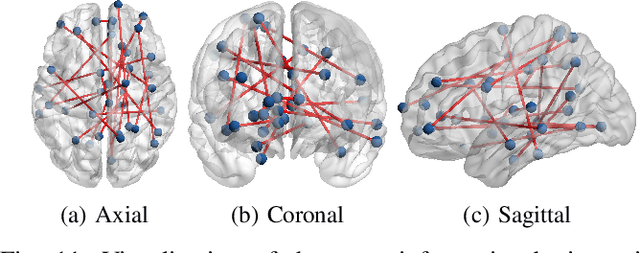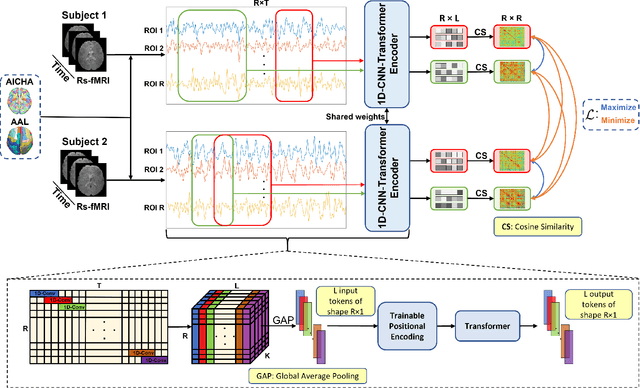Time Series Analysis
Time series analysis comprises statistical methods for analyzing a sequence of data points collected over an interval of time to identify interesting patterns and trends.
Papers and Code
Forecasting-Based Biomedical Time-series Data Synthesis for Open Data and Robust AI
Oct 06, 2025



The limited data availability due to strict privacy regulations and significant resource demands severely constrains biomedical time-series AI development, which creates a critical gap between data requirements and accessibility. Synthetic data generation presents a promising solution by producing artificial datasets that maintain the statistical properties of real biomedical time-series data without compromising patient confidentiality. We propose a framework for synthetic biomedical time-series data generation based on advanced forecasting models that accurately replicates complex electrophysiological signals such as EEG and EMG with high fidelity. These synthetic datasets preserve essential temporal and spectral properties of real data, which enables robust analysis while effectively addressing data scarcity and privacy challenges. Our evaluations across multiple subjects demonstrate that the generated synthetic data can serve as an effective substitute for real data and also significantly boost AI model performance. The approach maintains critical biomedical features while provides high scalability for various applications and integrates seamlessly into open-source repositories, substantially expanding resources for AI-driven biomedical research.
DyWPE: Signal-Aware Dynamic Wavelet Positional Encoding for Time Series Transformers
Sep 18, 2025Existing positional encoding methods in transformers are fundamentally signal-agnostic, deriving positional information solely from sequence indices while ignoring the underlying signal characteristics. This limitation is particularly problematic for time series analysis, where signals exhibit complex, non-stationary dynamics across multiple temporal scales. We introduce Dynamic Wavelet Positional Encoding (DyWPE), a novel signal-aware framework that generates positional embeddings directly from input time series using the Discrete Wavelet Transform (DWT). Comprehensive experiments in ten diverse time series datasets demonstrate that DyWPE consistently outperforms eight existing state-of-the-art positional encoding methods, achieving average relative improvements of 9.1\% compared to baseline sinusoidal absolute position encoding in biomedical signals, while maintaining competitive computational efficiency.
TimeEmb: A Lightweight Static-Dynamic Disentanglement Framework for Time Series Forecasting
Oct 01, 2025Temporal non-stationarity, the phenomenon that time series distributions change over time, poses fundamental challenges to reliable time series forecasting. Intuitively, the complex time series can be decomposed into two factors, \ie time-invariant and time-varying components, which indicate static and dynamic patterns, respectively. Nonetheless, existing methods often conflate the time-varying and time-invariant components, and jointly learn the combined long-term patterns and short-term fluctuations, leading to suboptimal performance facing distribution shifts. To address this issue, we initiatively propose a lightweight static-dynamic decomposition framework, TimeEmb, for time series forecasting. TimeEmb innovatively separates time series into two complementary components: (1) time-invariant component, captured by a novel global embedding module that learns persistent representations across time series, and (2) time-varying component, processed by an efficient frequency-domain filtering mechanism inspired by full-spectrum analysis in signal processing. Experiments on real-world datasets demonstrate that TimeEmb outperforms state-of-the-art baselines and requires fewer computational resources. We conduct comprehensive quantitative and qualitative analyses to verify the efficacy of static-dynamic disentanglement. This lightweight framework can also improve existing time-series forecasting methods with simple integration. To ease reproducibility, the code is available at https://github.com/showmeon/TimeEmb.
Benchmarking M-LTSF: Frequency and Noise-Based Evaluation of Multivariate Long Time Series Forecasting Models
Oct 06, 2025Understanding the robustness of deep learning models for multivariate long-term time series forecasting (M-LTSF) remains challenging, as evaluations typically rely on real-world datasets with unknown noise properties. We propose a simulation-based evaluation framework that generates parameterizable synthetic datasets, where each dataset instance corresponds to a different configuration of signal components, noise types, signal-to-noise ratios, and frequency characteristics. These configurable components aim to model real-world multivariate time series data without the ambiguity of unknown noise. This framework enables fine-grained, systematic evaluation of M-LTSF models under controlled and diverse scenarios. We benchmark four representative architectures S-Mamba (state-space), iTransformer (transformer-based), R-Linear (linear), and Autoformer (decomposition-based). Our analysis reveals that all models degrade severely when lookback windows cannot capture complete periods of seasonal patters in the data. S-Mamba and Autoformer perform best on sawtooth patterns, while R-Linear and iTransformer favor sinusoidal signals. White and Brownian noise universally degrade performance with lower signal-to-noise ratio while S-Mamba shows specific trend-noise and iTransformer shows seasonal-noise vulnerability. Further spectral analysis shows that S-Mamba and iTransformer achieve superior frequency reconstruction. This controlled approach, based on our synthetic and principle-driven testbed, offers deeper insights into model-specific strengths and limitations through the aggregation of MSE scores and provides concrete guidance for model selection based on signal characteristics and noise conditions.
VarCoNet: A variability-aware self-supervised framework for functional connectome extraction from resting-state fMRI
Oct 02, 2025



Accounting for inter-individual variability in brain function is key to precision medicine. Here, by considering functional inter-individual variability as meaningful data rather than noise, we introduce VarCoNet, an enhanced self-supervised framework for robust functional connectome (FC) extraction from resting-state fMRI (rs-fMRI) data. VarCoNet employs self-supervised contrastive learning to exploit inherent functional inter-individual variability, serving as a brain function encoder that generates FC embeddings readily applicable to downstream tasks even in the absence of labeled data. Contrastive learning is facilitated by a novel augmentation strategy based on segmenting rs-fMRI signals. At its core, VarCoNet integrates a 1D-CNN-Transformer encoder for advanced time-series processing, enhanced with a robust Bayesian hyperparameter optimization. Our VarCoNet framework is evaluated on two downstream tasks: (i) subject fingerprinting, using rs-fMRI data from the Human Connectome Project, and (ii) autism spectrum disorder (ASD) classification, using rs-fMRI data from the ABIDE I and ABIDE II datasets. Using different brain parcellations, our extensive testing against state-of-the-art methods, including 13 deep learning methods, demonstrates VarCoNet's superiority, robustness, interpretability, and generalizability. Overall, VarCoNet provides a versatile and robust framework for FC analysis in rs-fMRI.
Deep learning motion correction of quantitative stress perfusion cardiovascular magnetic resonance
Oct 01, 2025Background: Quantitative stress perfusion cardiovascular magnetic resonance (CMR) is a powerful tool for assessing myocardial ischemia. Motion correction is essential for accurate pixel-wise mapping but traditional registration-based methods are slow and sensitive to acquisition variability, limiting robustness and scalability. Methods: We developed an unsupervised deep learning-based motion correction pipeline that replaces iterative registration with efficient one-shot estimation. The method corrects motion in three steps and uses robust principal component analysis to reduce contrast-related effects. It aligns the perfusion series and auxiliary images (arterial input function and proton density-weighted series). Models were trained and validated on multivendor data from 201 patients, with 38 held out for testing. Performance was assessed via temporal alignment and quantitative perfusion values, compared to a previously published registration-based method. Results: The deep learning approach significantly improved temporal smoothness of time-intensity curves (p<0.001). Myocardial alignment (Dice = 0.92 (0.04) and 0.91 (0.05)) was comparable to the baseline and superior to before registration (Dice = 0.80 (0.09), p<0.001). Perfusion maps showed reduced motion, with lower standard deviation in the myocardium (0.52 (0.39) ml/min/g) compared to baseline (0.55 (0.44) ml/min/g). Processing time was reduced 15-fold. Conclusion: This deep learning pipeline enables fast, robust motion correction for stress perfusion CMR, improving accuracy across dynamic and auxiliary images. Trained on multivendor data, it generalizes across sequences and may facilitate broader clinical adoption of quantitative perfusion imaging.
A Novel Recurrent Neural Network Framework for Prediction and Treatment of Oncogenic Mutation Progression
Sep 16, 2025Despite significant medical advancements, cancer remains the second leading cause of death, with over 600,000 deaths per year in the US. One emerging field, pathway analysis, is promising but still relies on manually derived wet lab data, which is time-consuming to acquire. This work proposes an efficient, effective end-to-end framework for Artificial Intelligence (AI) based pathway analysis that predicts both cancer severity and mutation progression, thus recommending possible treatments. The proposed technique involves a novel combination of time-series machine learning models and pathway analysis. First, mutation sequences were isolated from The Cancer Genome Atlas (TCGA) Database. Then, a novel preprocessing algorithm was used to filter key mutations by mutation frequency. This data was fed into a Recurrent Neural Network (RNN) that predicted cancer severity. Then, the model probabilistically used the RNN predictions, information from the preprocessing algorithm, and multiple drug-target databases to predict future mutations and recommend possible treatments. This framework achieved robust results and Receiver Operating Characteristic (ROC) curves (a key statistical metric) with accuracies greater than 60%, similar to existing cancer diagnostics. In addition, preprocessing played an instrumental role in isolating important mutations, demonstrating that each cancer stage studied may contain on the order of a few-hundred key driver mutations, consistent with current research. Heatmaps based on predicted gene frequency were also generated, highlighting key mutations in each cancer. Overall, this work is the first to propose an efficient, cost-effective end-to-end framework for projecting cancer progression and providing possible treatments without relying on expensive, time-consuming wet lab work.
VARMA-Enhanced Transformer for Time Series Forecasting
Sep 05, 2025Transformer-based models have significantly advanced time series forecasting. Recent work, like the Cross-Attention-only Time Series transformer (CATS), shows that removing self-attention can make the model more accurate and efficient. However, these streamlined architectures may overlook the fine-grained, local temporal dependencies effectively captured by classical statistical models like Vector AutoRegressive Moving Average model (VARMA). To address this gap, we propose VARMAformer, a novel architecture that synergizes the efficiency of a cross-attention-only framework with the principles of classical time series analysis. Our model introduces two key innovations: (1) a dedicated VARMA-inspired Feature Extractor (VFE) that explicitly models autoregressive (AR) and moving-average (MA) patterns at the patch level, and (2) a VARMA-Enhanced Attention (VE-atten) mechanism that employs a temporal gate to make queries more context-aware. By fusing these classical insights into a modern backbone, VARMAformer captures both global, long-range dependencies and local, statistical structures. Through extensive experiments on widely-used benchmark datasets, we demonstrate that our model consistently outperforms existing state-of-the-art methods. Our work validates the significant benefit of integrating classical statistical insights into modern deep learning frameworks for time series forecasting.
TimeCluster with PCA is Equivalent to Subspace Identification of Linear Dynamical Systems
Sep 16, 2025TimeCluster is a visual analytics technique for discovering structure in long multivariate time series by projecting overlapping windows of data into a low-dimensional space. We show that, when Principal Component Analysis (PCA) is chosen as the dimensionality reduction technique, this procedure is mathematically equivalent to classical linear subspace identification (block-Hankel matrix plus Singular Vector Decomposition (SVD)). In both approaches, the same low-dimensional linear subspace is extracted from the time series data. We first review the TimeCluster method and the theory of subspace system identification. Then we show that forming the sliding-window matrix of a time series yields a Hankel matrix, so applying PCA (via SVD) to this matrix recovers the same principal directions as subspace identification. Thus the cluster coordinates from TimeCluster coincide with the subspace identification methods. We present experiments on synthetic and real dynamical signals confirming that the two embeddings coincide. Finally, we explore and discuss future opportunities enabled by this equivalence, including forecasting from the identified state space, streaming/online extensions, incorporating and visualising external inputs and robust techniques for displaying underlying trends in corrupted data.
BEDTime: A Unified Benchmark for Automatically Describing Time Series
Sep 05, 2025



Many recent studies have proposed general-purpose foundation models designed for a variety of time series analysis tasks. While several established datasets already exist for evaluating these models, previous works frequently introduce their models in conjunction with new datasets, limiting opportunities for direct, independent comparisons and obscuring insights into the relative strengths of different methods. Additionally, prior evaluations often cover numerous tasks simultaneously, assessing a broad range of model abilities without clearly pinpointing which capabilities contribute to overall performance. To address these gaps, we formalize and evaluate 3 tasks that test a model's ability to describe time series using generic natural language: (1) recognition (True/False question-answering), (2) differentiation (multiple choice question-answering), and (3) generation (open-ended natural language description). We then unify 4 recent datasets to enable head-to-head model comparisons on each task. Experimentally, in evaluating 13 state-of-the-art language, vision--language, and time series--language models, we find that (1) popular language-only methods largely underperform, indicating a need for time series-specific architectures, (2) VLMs are quite successful, as expected, identifying the value of vision models for these tasks and (3) pretrained multimodal time series--language models successfully outperform LLMs, but still have significant room for improvement. We also find that all approaches exhibit clear fragility in a range of robustness tests. Overall, our benchmark provides a standardized evaluation on a task necessary for time series reasoning systems.
 Add to Chrome
Add to Chrome Add to Firefox
Add to Firefox Add to Edge
Add to Edge